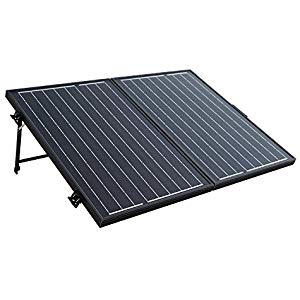To the OP: What you are looking for is all over the market.
This is what we have for our trailer:
Amazon.com : HQST 100 Watt 12Volt Off Grid Monocrystalline Portable Foldable Solar Panel Suitcase with 10A Charge Controller : Garden & Outdoor
www.amazon.com
Under $200
Fits in it's own carry case and folds up for storage
Has a charge controller
Alligator clips to battery.
Now, I did make one change for ours: I didn't like the alligator clips so I replaced them with an SAE harness from a battery tender. This gives me the opportunity to just plug it in without having to expose the battery. Sets up in a couple of minutes and stores easily.
The charge controller is mounted to the back of the panel. This is not ideal for a couple of reasons: First of all, because the 12v power will lose some voltage between the controller and the battery (25' cable) and 2nd because the charge controller is not waterproof.
HOWEVER, in the spirit of "does it WORK?" the answer is a resounding "YES!" It works fine. Keeps the dual 6v batteries on our trailer charged up and if needed I can also plug it into my 12v aux battery (which also has an SAE plug for charging.)
You could put a simple SAE harness on your vehicle battery and plug it in that way too.
Simple & cheap. Yes, there are more expensive/complicated ways to get more power, but it comes down to what you NEED. A 100w panel will put close to 5a into your battery on a nice sunny day. Assuming your battery is in good shape that should be more than enough to keep the fridge running without killing your battery.

 rvbprecision.com
rvbprecision.com









